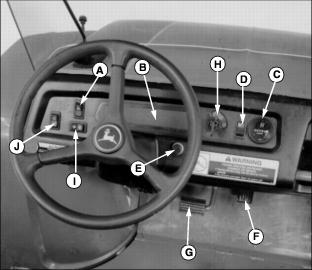
An Indifference Curve to the right represents a preferred position and therefore a consumer will always try to move on the indifference map as much to the right as possible. The second property of the Indifference Curve is that they are generally convex to the origin of the axes—the left hand portion is normally steep while the right hand portion is relatively flat. This property of the Indifference Curve characteristic of indifference curve is derived from the Law of Diminishing Marginal Rate of Substitution. The marginal rate of substitution neither increases nor does it remain constant. For example, each indifference curve is typically convex to the origin, and no two indifference curves ever intersect. Consumers are always assumed to be more satisfied when achieving bundles of goods on indifference curves that are farther from the origin.
- It is observed that higher levels of indifference curves represent higher levels of satisfaction.
- The reason for this is that if a consumer wants to have more of one commodity, the other commodity must be slashed in a proportional amount.
- In the 1880’s he employed it to show the possibility of exchange between two persons but he did not employ different types of curves to explain consumer demand.
- This is born out of our assumption that the consumer is considering different combinations of two commodities.
- The theory was developed so that analysis of economic choice could be used for preference, which can be observed, rather than the older concept of utility.
It is observed that higher levels of indifference curves represent higher levels of satisfaction. It is notable that higher levels of the curves indicate more bundles of products. It is the quality of consumers that they will always seek more of a product bundle that they prefer because it will offer more satisfaction to them. So, consumers may want more amounts of both goods or of at least one leading to a preference for higher levels of indifference curves. Nothing extra or additional units will be offered when the proportions of two commodities are exchanged.
Price and Output Determination Under Perfect Competition and Imperfect Competition
The tangency condition between the indifference curve and the budget line indicates the optimal consumption bundle when indifference curves exhibit typical convexity. The resulting formula for y gives the relationship between goods x and y along the indifference curve for a specific utility level k. Different indifference curves can be obtained by changing the value of k.
If we plot the combinations on a graph we will get an indifference curve. It means the consumer has in his possession OM quantity of money and does not want any unit of apples. At a point, N consumer likes to have a combination of OQ units of apples and OP units of money.
Indifference curve will not touch the axis
Consumers are thus “indifferent” to which combination they choose over another. Typically, indifference curves are shown convex to the origin, and no two indifference curves ever intersect. Indifference curves are generally downward sloping and convex to the origin.
Combination A on this curve represents more units of oranges with the same units of apples as compared with combination C. At point A of the indifference curve the consumer has ox units of x and oy units of y when the marginal significance of x in terms of y is given by the tangent of the angle AKO. Now the consumer travels down the indifference curve and comes to point B where he has ox1 units of x and oy1 units of y. The marginal significance of x in terms of y at this new point is given by the tangent of the angle BLO. Since angle BLO is greater than the angle AKO, it follows that the marginal significance of x is greater at point ‘B’ on the curve and the marginal significance of x is smaller at point A on the curve. The consumer passes from point A to B on the same curve to remain in the same level of satisfaction.
Indifference Curve
It indicates the relative importance or preference for one good over the other. In other words, the consumer is indifferent between any two points on the curve, as each combination provides them with the same level of happiness. This concept allows economists to analyze and understand consumer preferences and behaviors under different circumstances, such as changes in income or price levels. Standard indifference curve analysis operates using a simple two-dimensional chart. Along the indifference curve, a consumer will have no preference between any of the combinations of goods represented by points on the curve. This is because the combination of goods on an indifference curve provides the same level of utility to the consumer.
- By analyzing the properties, marginal rate of substitution, and limitations of indifference curves, economists can better understand consumer behavior and inform policy-making.
- The slope of the budget line is the relative price of good A in terms of good B, equal to the price of good A as a ratio of the market price of good B.
- It represents the same level of satisfaction of a consumer from different bundles of commodities i.e. the satisfaction or pleasure that a consumer can get leftovers the identical lengthways of an IC.
- Paul Boyce is an economics editor with over 10 years experience in the industry.
- On account of it, the indifference curve shows a diminishing marginal rate of substitution of x for y (MRSxy ).
Here we will discuss the assumptions and properties of the indifference curve. Each point on the curve is a different combination of two goods in various quantities. Theoretically, any point on the curve will provide equal satisfaction (utility) to an individual.
The indifference curve compares the utility of the products instead of the price and this shows the consumer choice for the product. As shown on the graph above, at any point, T, Good X is substitutable by Good Y. These points show the indifference between two goods. However, indifference cannot be found on any other point than the curve on the graph. The indifference curve shows the combination of two goods that gives equal utility or the same level of satisfaction to the consumer. In the diagram quantity of apples is shown on the ox-axis and the quantity of oranges on the oy-axis.
Properties/ Features/ Characteristics/Standard of Indifference Curve
But as a special case it will touch the Y axis at point A if the combination is between Money and Commodity as shown in the Figure 4. It would then mean that the consumer either wants various combinations of money and commodity or only OA units of money which gives him command over commodity X. At point B in the figure the consumer has OM units of commodity X and OA1 units of money and this gives him the same satisfaction of having only OA units of money which means command over x and other commodities. However, we have no hints on how much extra satisfaction or utility an upper indifference curve directs. An indifference curve far away from the origin is higher or the upper indifference curve close to the origin is a lower indifference curve. An indifference schedule may define as the schedule of various combinations of the two goods that will be equally preferable to the consumer.
Risk Averse: What It Means, Investment Choices and Strategies – Investopedia
Risk Averse: What It Means, Investment Choices and Strategies.
Posted: Sat, 25 Mar 2017 19:04:06 GMT [source]
This m means that two levels of satisfaction, A and B which are by definition unequal manage to become equal at the point C. Hence Q represents a more valued and preferred combination of oranges and bananas than P. As all the points on one Indifference Curve represents equal satisfaction, therefore every point on IC2 represents a combination, preferred to that represented by any point on IC.
Therefore, the principle of diminishing marginal utility indicates that each additional unit of consumption adds less to the cumulative utility than the previous unit. In the above figure, the quantity of good X is measured along the X-axis, and the quantity of good Y is measured along Y-axis. IC is the indifference curve which shows the different combinations of goods X and Y. All the combinations of both goods on the IC yield the same level of satisfaction to the consumer. Thus, if we take the locus of all these points, we get a curve showing various blends of at least two commodities that yields an equal level of pleasure to the buyers. The slope of an indifference curve, known as the marginal rate of substitution (MRS), represents the rate at which an individual is willing to trade one good for another while maintaining the same level of satisfaction.
As the whole curve shifts upwards and downwards, the curves lie parallel to each other and do not intersect. In economics, indifference curves show which goods in the marketplace bring equal satisfaction to consumers, leaving them indifferent to which goods they purchase. Explore the definition, learn about their use and impact in economics, and review how they work. A curve showing different combinations of two commodities giving the same level of satisfaction to the consumer is called the indifference curve.

Let us take two Indifference Curves IC1 and IC2 lying to the right of IC1. At the point Q though the number of bananas remains the same i.e., ON, yet the number of oranges increases from OM to OM1. The total satisfaction of the consumer is therefore bound to be greater at Q than at P. Other critics note that it is theoretically possible to have concave indifference curves or even circular curves that are either convex or concave to the origin at various points. Indifference curves can show the overall comparison of satisfaction levels derived from two products.
Two Indifference Curves Do Not Intersect Each Other
A consumer can determine his preferences on the basis of satisfaction derived from different goods or their combinations. The utility can be expressed in terms of ordinal numbers, i.e., first, second etc. Another characteristic feature of indifference curve is that it will not touch the X axis or Y axis.

If the indifference curve is horizontal to X axis, the various points on the curve A,B,C,D denoting various combinations of x commodity and y commodity may not have equal significance. At point B, the consumer gets more of x than at point A and at point C, the consumer gets still more of x while the quantity of y remains constant. An entire utility function can be graphically represented by an indifference curve map, where several indifference curves correspond to different levels of utility. In the graph below, there are three different indifference curves, labeled A, B, and C.

Leave A Comment